What Does it Take to Be a Statistician?
Position Description Develop or apply mathematical or statistical theory and methods to collect, organize, interpret, and summarize numerical data to provide usable information. May specialize in fields such as bio-statistics, agricultural statistics, business statistics, or economic statistics. Includes mathematical and survey statisticians.
Statistician Responsibilities
- Adapt statistical methods to solve specific problems in many fields, such as economics, biology, and engineering.
- Prepare data for processing by organizing information, checking for inaccuracies, and adjusting and weighting the raw data.
- Identify relationships and trends in data, as well as any factors that could affect the results of research.
- Present statistical and nonstatistical results, using charts, bullets, and graphs, in meetings or conferences to audiences such as clients, peers, and students.
- Examine theories, such as those of probability and inference, to discover mathematical bases for new or improved methods of obtaining and evaluating numerical data.
- Develop software applications or programming to use for statistical modeling and graphic analysis.
Featured schools near , edit
Skills Needed to be a Statistician
Statisticians state the following job skills are important in their day-to-day work.
Mathematics: Using mathematics to solve problems.
Critical Thinking: Using logic and reasoning to identify the strengths and weaknesses of alternative solutions, conclusions or approaches to problems.
Reading Comprehension: Understanding written sentences and paragraphs in work related documents.
Active Listening: Giving full attention to what other people are saying, taking time to understand the points being made, asking questions as appropriate, and not interrupting at inappropriate times.
Complex Problem Solving: Identifying complex problems and reviewing related information to develop and evaluate options and implement solutions.
Speaking: Talking to others to convey information effectively.
Related Job Titles
- Private Statistical/Psychometric Consultant
- Survey Statistician
- Clinical Analyst
- Assistant Division Chief for Statistical Program Management
- Time Study Statistician
Are There Job Opportunities for Statisticians?
In 2016, there was an estimated number of 37,200 jobs in the United States for Statistician. New jobs are being produced at a rate of 33.9% which is above the national average. The Bureau of Labor Statistics predicts 12,600 new jobs for Statistician by 2026. Due to new job openings and attrition, there will be an average of 4,400 job openings in this field each year.
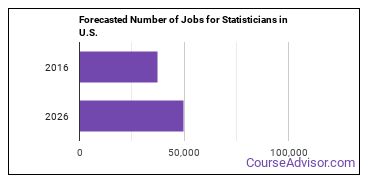
The states with the most job growth for Statistician are Utah, Rhode Island, and Nevada. Watch out if you plan on working in Alaska, Maryland, or Arkansas. These states have the worst job growth for this type of profession.
Do Statisticians Make A Lot Of Money?
The average yearly salary of a Statistician ranges between $53,000 and $139,350.
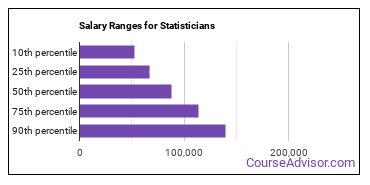
Statisticians who work in New Jersey, District of Columbia, or Maryland, make the highest salaries.
How much do Statisticians make in each U.S. state?
| State | Annual Mean Salary |
|---|---|
| Alabama | $61,860 |
| Alaska | $87,020 |
| Arizona | $80,330 |
| Arkansas | $76,630 |
| California | $99,860 |
| Colorado | $84,380 |
| Connecticut | $101,820 |
| Delaware | $100,710 |
| District of Columbia | $104,310 |
| Florida | $81,960 |
| Georgia | $92,800 |
| Hawaii | $71,040 |
| Idaho | $113,780 |
| Illinois | $89,040 |
| Indiana | $74,870 |
| Iowa | $74,430 |
| Kansas | $89,250 |
| Kentucky | $79,640 |
| Louisiana | $76,120 |
| Maine | $73,560 |
| Maryland | $107,400 |
| Massachusetts | $108,670 |
| Michigan | $80,920 |
| Minnesota | $95,930 |
| Mississippi | $65,510 |
| Missouri | $71,150 |
| Nebraska | $67,080 |
| Nevada | $71,210 |
| New Hampshire | $75,880 |
| New Jersey | $116,090 |
| New Mexico | $81,100 |
| New York | $95,870 |
| North Carolina | $101,010 |
| North Dakota | $75,230 |
| Ohio | $82,180 |
| Oklahoma | $63,120 |
| Oregon | $80,920 |
| Pennsylvania | $85,180 |
| South Carolina | $68,320 |
| Tennessee | $74,450 |
| Texas | $84,940 |
| Utah | $75,000 |
| Vermont | $69,750 |
| Virginia | $87,700 |
| Washington | $100,670 |
| West Virginia | $76,070 |
| Wisconsin | $82,330 |
What Tools & Technology do Statisticians Use?
Below is a list of the types of tools and technologies that Statisticians may use on a daily basis:
- Microsoft Excel
- Microsoft Word
- Microsoft Office
- Microsoft PowerPoint
- Python
- Microsoft Access
- Data entry software
- SAP
- Structured query language SQL
- The MathWorks MATLAB
- SAS
- Linux
- Microsoft Visual Basic
- IBM SPSS Statistics
- UNIX
- Microsoft SQL Server
- R
- Minitab
- StataCorp Stata
- Tableau
How to Become a Statistician
What education is needed to be a Statistician?
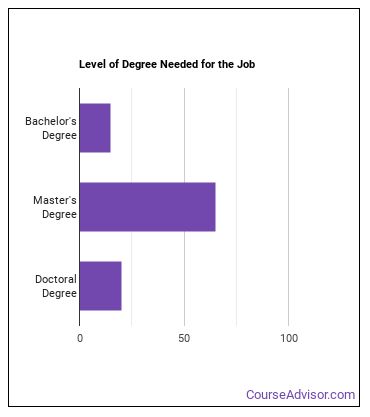
How many years of work experience do I need?
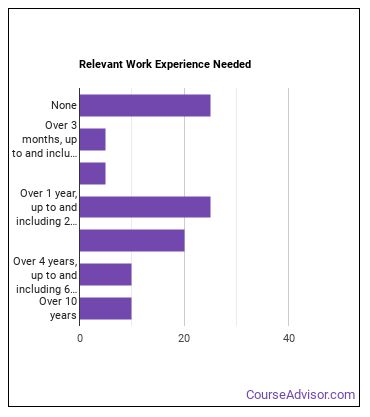
Where do Statisticians Work?
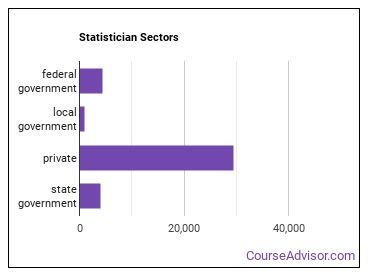
The table below shows some of the most common industries where those employed in this career field work.
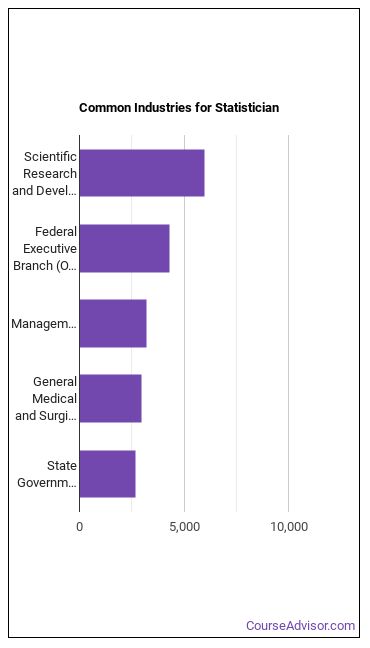
Related Careers
Career changers with experience as a Statistician sometimes find work in one of the following fields:
References:
Image Credit: Wallpoper via Public domain
More about our data sources and methodologies.
Featured Schools
 Request Info
Request Info
|
Southern New Hampshire University You have goals. Southern New Hampshire University can help you get there. Whether you need a bachelor's degree to get into a career or want a master's degree to move up in your current career, SNHU has an online program for you. Find your degree from over 200 online programs. Learn More > |
